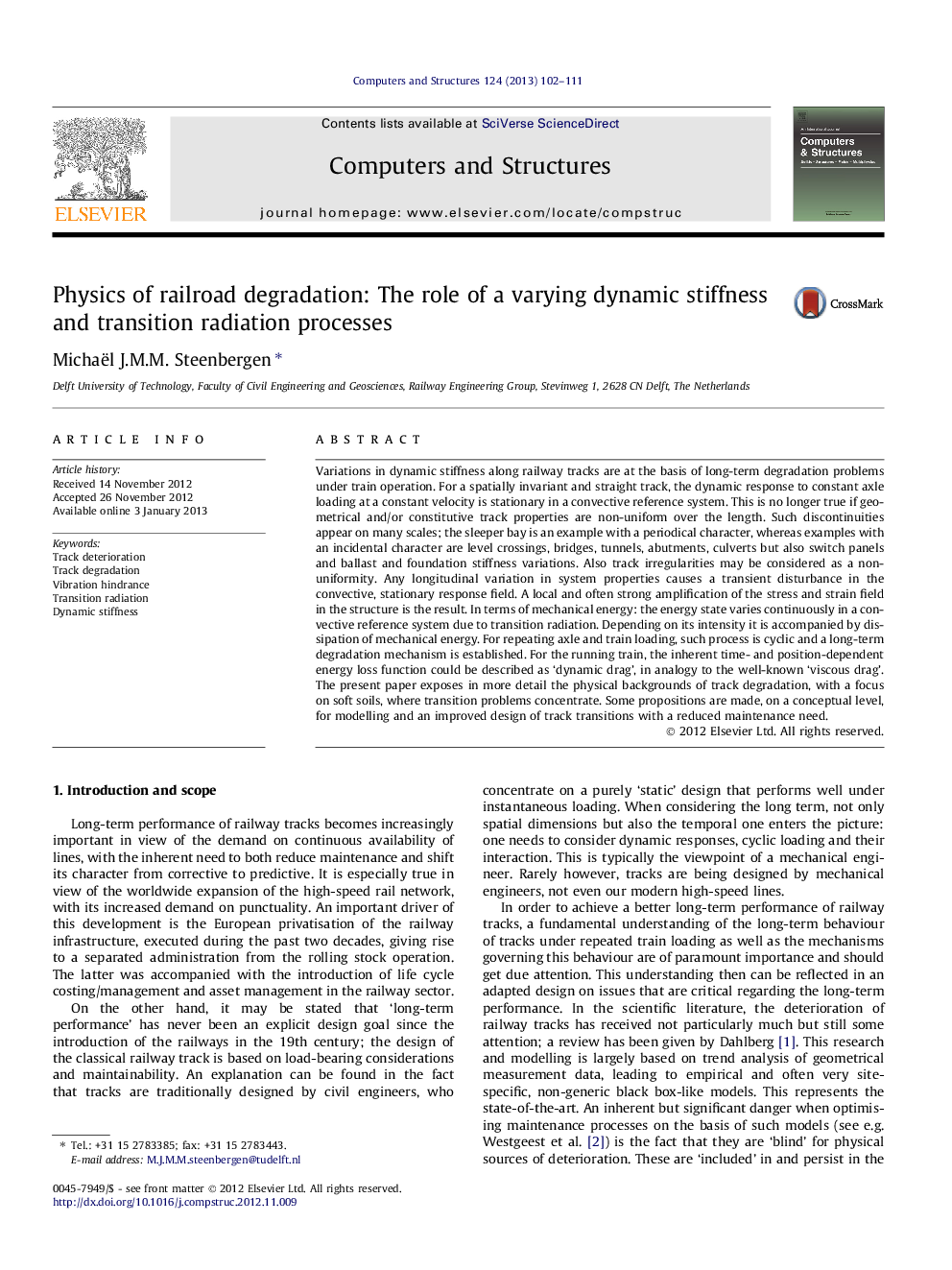| Article ID | Journal | Published Year | Pages | File Type |
|---|---|---|---|---|
| 509751 | Computers & Structures | 2013 | 10 Pages |
Variations in dynamic stiffness along railway tracks are at the basis of long-term degradation problems under train operation. For a spatially invariant and straight track, the dynamic response to constant axle loading at a constant velocity is stationary in a convective reference system. This is no longer true if geometrical and/or constitutive track properties are non-uniform over the length. Such discontinuities appear on many scales; the sleeper bay is an example with a periodical character, whereas examples with an incidental character are level crossings, bridges, tunnels, abutments, culverts but also switch panels and ballast and foundation stiffness variations. Also track irregularities may be considered as a non-uniformity. Any longitudinal variation in system properties causes a transient disturbance in the convective, stationary response field. A local and often strong amplification of the stress and strain field in the structure is the result. In terms of mechanical energy: the energy state varies continuously in a convective reference system due to transition radiation. Depending on its intensity it is accompanied by dissipation of mechanical energy. For repeating axle and train loading, such process is cyclic and a long-term degradation mechanism is established. For the running train, the inherent time- and position-dependent energy loss function could be described as ‘dynamic drag’, in analogy to the well-known ‘viscous drag’. The present paper exposes in more detail the physical backgrounds of track degradation, with a focus on soft soils, where transition problems concentrate. Some propositions are made, on a conceptual level, for modelling and an improved design of track transitions with a reduced maintenance need.
